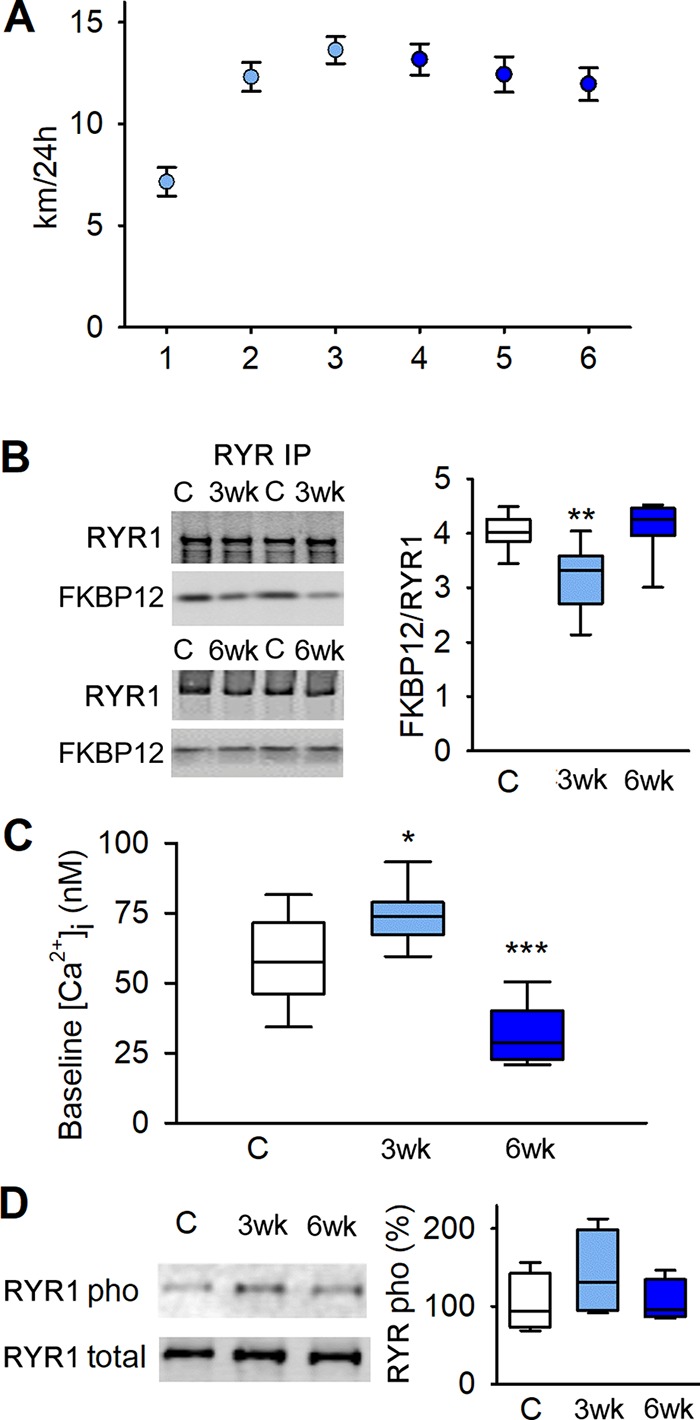Figure 1.

Voluntary running causes leaky RYR1 and elevated baseline [Ca2+]i. (A) Mean (± SEM) of voluntary 24-h running distance of mice with up to 6-wk access to an in-cage running wheel (n = 20). (B) Original blots (left) and boxplot data (right) of immunoprecipitated RYR1 in tibialis anterior from mice with locked wheels (controls), 3-wk runners, and 6-wk runners blotted for coprecipitated FKBP12; data are presented relative to the mean value in controls (n = 17, 10, and 7, respectively). (C) Boxplot of baseline [Ca2+]i in dissected single FDB fibers from controls, and 3- and 6-wk runners (n = 14, 9, and 6 respectively). (D) Original blots (left) and boxplot of relative S2834 phosphorylation per total RYR1; data presented relative to the mean pixel density in controls, which was set to 100%. *, P < 0.05; **, P < 0.01; ***, P < 0.001, 3-wk or 6-wk vs. controls with one-way ANOVA. 3wk, 3-wk runners; 6wk, 6-wk runners; C, controls. Box plots show median, quartiles, and min/max.
